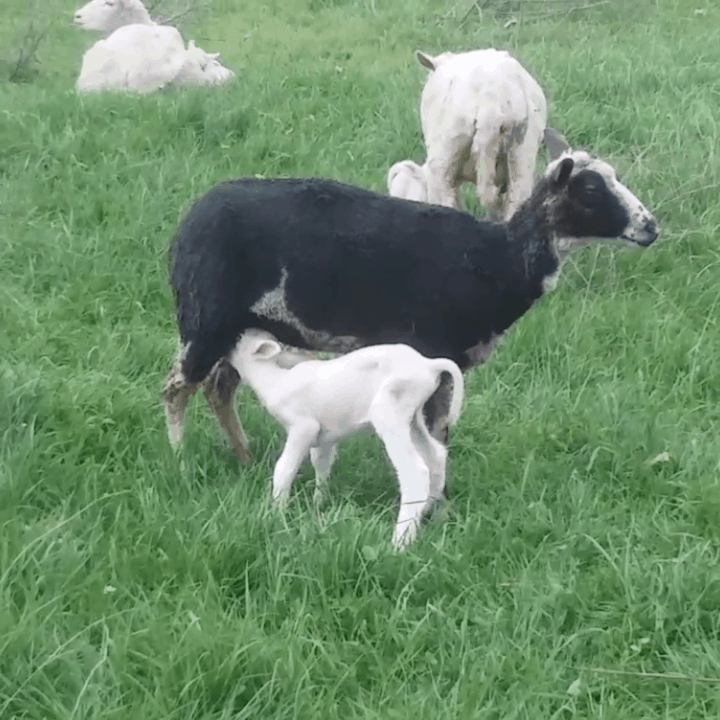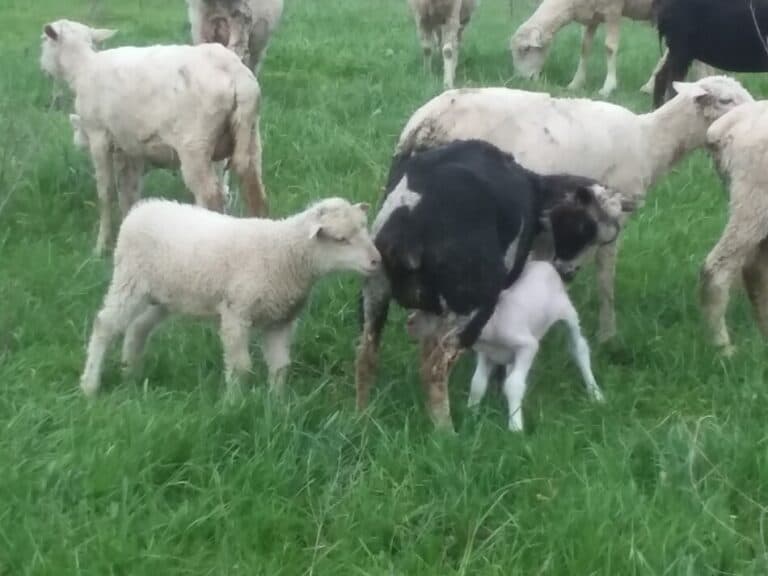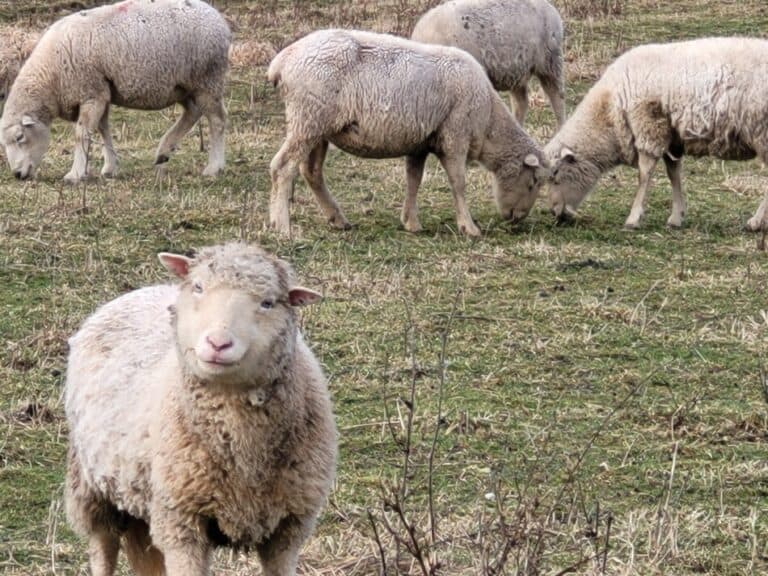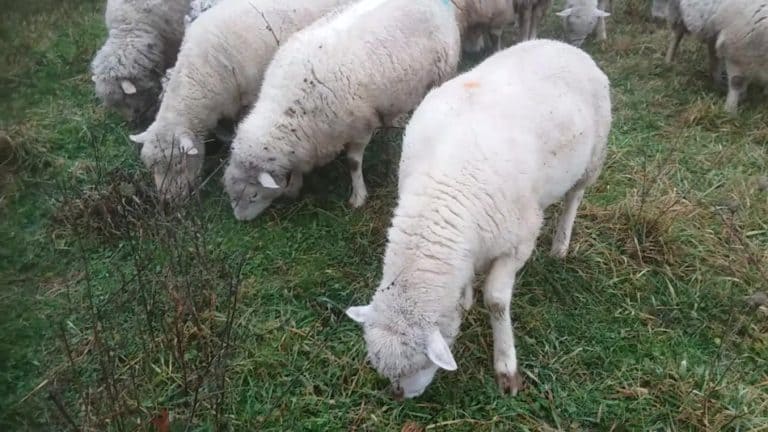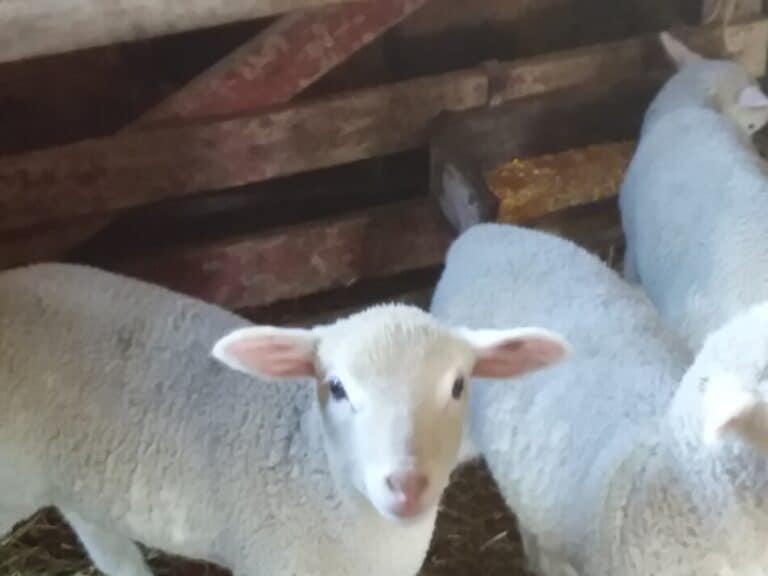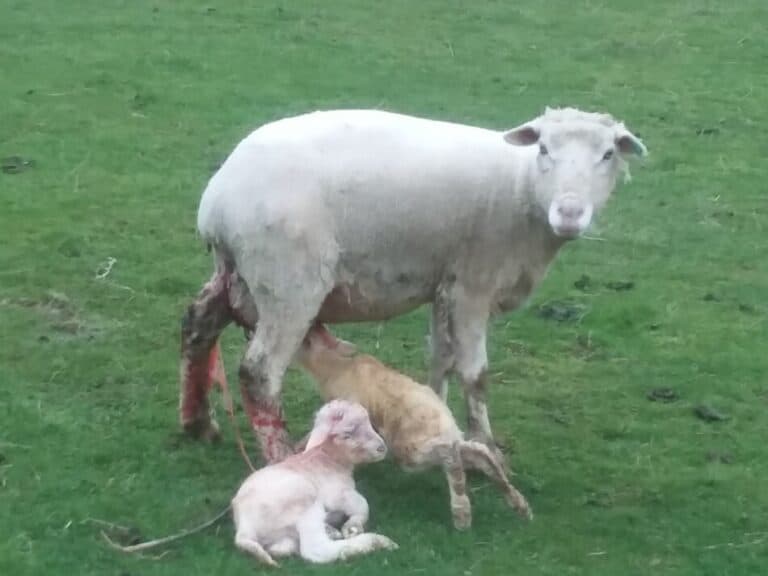How Much Does It Cost To Start A Sheep Farm?
Sheep are becoming more popular as folks realize just how many places you can raise sheep. Once you decide that sheep farming is worth looking into, you need to know some basics, like costs to get started.
We’ll go through some of the things that you’ll need to decide on before you get sheep, then you’ll know what sheep you are looking for and have a better idea of what it will cost you to start a sheep farm.
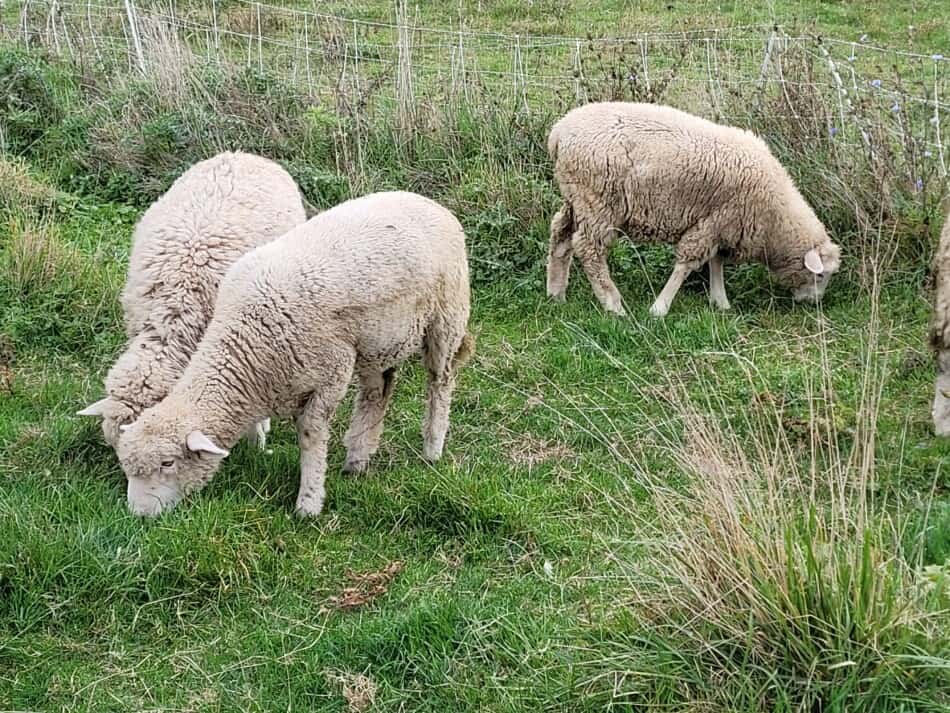
I’ll be upfront and say that your specific costs will depend on where you live and the demand for the type of sheep you want and the supply of those sheep, in your area.
I can give you things to consider and places to look to get a better feel for the prices in your area, but you’ll have to do some research and figure out the specifics for you and your operation.
What kind of sheep farm do you want?
Before we can get into cost, we have to figure out what kind of sheep farm do you want to have?
Are you going to be raising lambs from your own ewes? Are you taking weaned lambs and growing them to market weight? Are you providing custom grazing? These are just a few of your options.
Take some time and think this one over, especially if it is going to be difficult for you to be able to buy sheep upfront. Chances are you have more options than you thought of at first.
| Commercial flock of 20 ewes | Cost |
| buying ewes | $8,000 (20 ewes at $400 each) |
| buying a ram | $1,000 |
| portable fence and energizer | $1,280 |
| water trough | $120 |
| purchasing hay | $1,575 for 5 months at $200/ton |
| supplemental feeds | variable with your situation |
| medication/dewormers | $50 (small bottle of dewormer) |
| paid help (vet, shearer, custom hay, etc.) | variable with your situation |
| farm or barn rent | variable with your situation |
Have money for flock plus expenses
No matter what type of sheep farm you decide to start, you’ll need to have a good amount of money available to buy the animals and cover expenses.
Chances are good that your sheep enterprise will run better with some money coming in from other sources, plan on keeping your job until the sheep make the income you need.
Costs breakdown:
This means that you’d need to buy the sheep for $9,000 + portable fencing for $1,280 + water trough for $120 + dewormer for 50 = $10,450 to get started, if you were using my numbers.
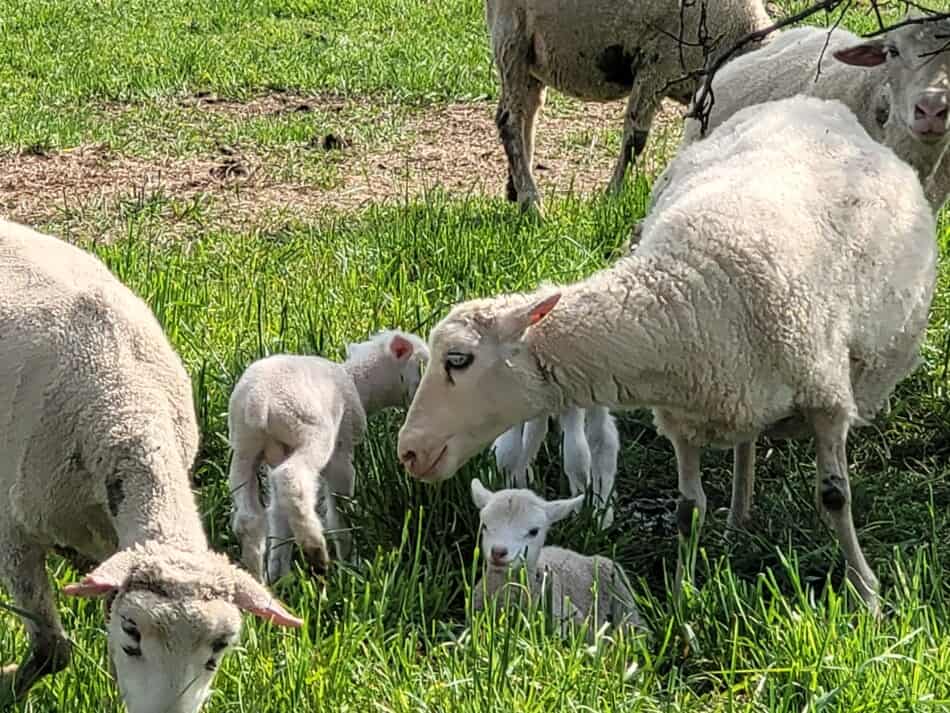
You’ll have a year’s worth of expenses before any potential income
If you are buying your own flock, you’ll need to have cash upfront to cover buying the flock, feeding them, caring for them and taking care of the lambs until you finally have something to sell in a year or so.
If you are able doing more of the custom grazing model, you’ll have some initial expenses in addition to the sheep like portable fencing, but your system will start to pay you back as soon as you get clients.
This means that you would need to have the hay expenses, or whatever you are feeding for the non growing season, also to pay for before any income comes in.
Costs breakdown:
Hay in this example is $1,575 (keep in mind this is only 5 months of hay), which takes your cash needed in the first year to at least $12,025. This will be spent before any money comes back to you.
Potential income for first year
Now onto potential income for the first year, keep in mind you are likely to hit the lower numbers until you get some experience.
Using the figures in the table above, the 20 ewes, if you were to wean and sell 150%, which is high but we’ll go with it, that is 30 lambs. 30 lambs at $200 each is $6,000. That is the best case scenario of income.
Since you are new, it will probably be closer to 100%, which is $4,000 for the year at $200 per lamb. Two things to keep in mind, that $4,000 comes at the end of the year and it requires selling all lambs.
If you want to keep back any ewe lambs, then income goes down and expenses go up, since you added eaters for the winter.
Of course, these numbers could be more like $200 per ewe, which would have you getting back the initial cost of the flock in your first year. This is where the area specifics come in.

Get the sheep flock
Now it’s time to buy the flock. For this you’ll need to do a bit of research to find the prices for your area or you can just work off of my numbers. Honestly, it will be worth your time to do the research!
I have an entire series of articles on costs of sheep:
- How Much Do Sheep Cost? (this is more of an overview, for specifics read the articles below)
- How Much Does A Ram Cost?
- How Much Does A Ewe Cost?
- How Much Does A Ewe Lamb Cost?
In my area, if I were to start up from no sheep and quality starter flock, I would expect to pay somewhere around $300-500 per ewe and $1,000+ for a ram.
Prices in my area for sheep tend to be on the higher side of things, but as long as sheep and lambs are selling well, prices will be on the higher end of normal for your area, too.
What about sheep of a particular breed?
Anytime you get more specific, you are probably raising the cost of the sheep you’ll be buying.
If you are looking for a general type of sheep, like hair or wool, but not being overly specific about things like registration papers, in my experience solid commercial type ewes sell for about the same price.
For example, if I were looking to buy a nice flock of hair sheep, I would expect to pay $300-500 a piece for ewes, which is exactly what I would expect to pay for a nice flock of wool sheep.
As long as the ewes are of high quality and work well for your area, it’s more about personal preference than anything else.
Best Sheep For Beginners and Best Sheep For Meat are my articles that will give you some ideas of which breeds to take a closer look at.
My starter flock example: cost of 20 ewes plus 1 ram
Here’s an example of what I would expect to pay around here for a starter flock of 20 nice ewes and a ram. You could get ewe lambs, if you prefer, but they are less reliable so I’m going with ewes.
cost of ewes, each: $400, $400 x 20 head = total of $8,000
cost of ram, each: $1,000 for a total of $1,000
cost of younger stock: probably not buying any
total cost of starter flock, sheep only: $9,000
You’ll need to have an area to keep your sheep
Where are you keeping your sheep? Sheep can be raised in a barn or out on pasture or a combination of both.
The way you choose to run your sheep operation will be based on what resources you have available in your area. All options have pros and cons, it’s more about matching you and your sheep to your situation.
Owning pasture land for sheep
Owning pasture land for your flock is probably the first thing folks think of when they consider sheep farming.
Pros: If you can keep a the flock on the amount of land you have, you’ve got a great start on sheep farming
Cons: This is the most expensive way to raise sheep, because of the cost of buying the land
Do Sheep Ruin Pastures? is my article that goes over how to keep your pastures looking great using your sheep.
Renting an area for sheep
If renting is popular in your area, this is a great option for getting started with sheep, you just need to look around and see what’s available.
Pros: If you can find pastures with sheep appropriate fence, renting is a great option for a beginner.
Cons: You need to be in a pasture friendly area, going from a bare field to fenced with good grass will take time and be costly.
Keep in mind that sheep have different fencing requirements than cattle, so if you are renting a farm that previously was for cattle, you’ll probably need to plan on using portable fencing, as well.
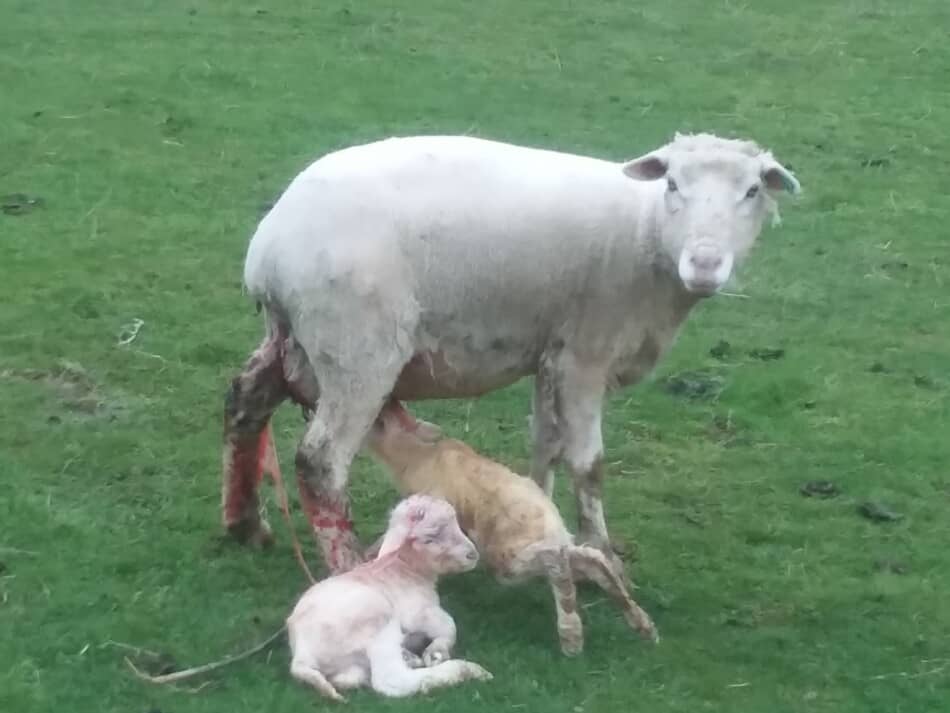
Using your yard for sheep
Don’t overlook the option of using your yard or someone else’s yard for sheep. We let our sheep run through the yard every year, it’s a normal part of the rotation.
They are not perfect, you’ll still have some trimming to do, and must be kept away from landscaping, but they do a good job which saves us from mowing.
Is your yard big enough? If you have a riding lawnmower, you have room for sheep. If you and your neighbors are paying for someone to mow your lawn, why not use sheep instead?
Backyard Sheep is my article that gives you a yard based grazing plan, which would be scaled down from 20 ewes, of course, but is doable.
Pros: You get lamb growth rather than paying for the mowing.
Cons: Lawns may be small in your area or animals may be prohibited.
If you are having trouble seeing this one work out, consider that folks are paying for sheep to graze their yards! This is just one of many companies that get paid to raise their sheep on other people’s land.
This Fairfax Company Wants You To Use Their Sheep In Place Of Your Lawn Mower is an article in Northern Virginia magazine talking about Lambmowers.com sheep grazing service, pictures included.
In wildfire prone areas, grazing is done on a much larger scale, along roads, in right of ways, etc., to eat off the vegetation that if left in place would be additional fuel for a fire.
Another situation where you get paid for your sheep to eat someone else’s grass and weeds!
What is your fencing plan for the flock?
If your sheep are on pasture, you win with grass as a low cost, high quality feed source but you now have to figure out fencing. Generally speaking, you can go with portable or permanent fence.
Portable fence for sheep
Portable fence for sheep is going to be quick to get you started grazing. You’ll need some netting, I would get 7 to start with and an energizer.
The netting will cost you $140 each roll and you’ll want enough so that you can have the sheep in place and set up the next move, which is why I suggest 7 electric nettings. $140 x 7 = $980
You’ll also need the energizer, which is the power for the electric fence. The energizer will be around $300, which takes your total costs for portable fence up to $1,280.
Electric Netting For Sheep shows you the netting we use and how we use it.
Watering the flock
Of course, your sheep will also need water so you’ll need to have a trough, which will run you around $120. I’m figuring you already have a hose or are putting the trough by the hydrant.
If there is no water where you are keeping the sheep, you’ll have to fill a water tank to fill the trough, so plan on that cost, as well.
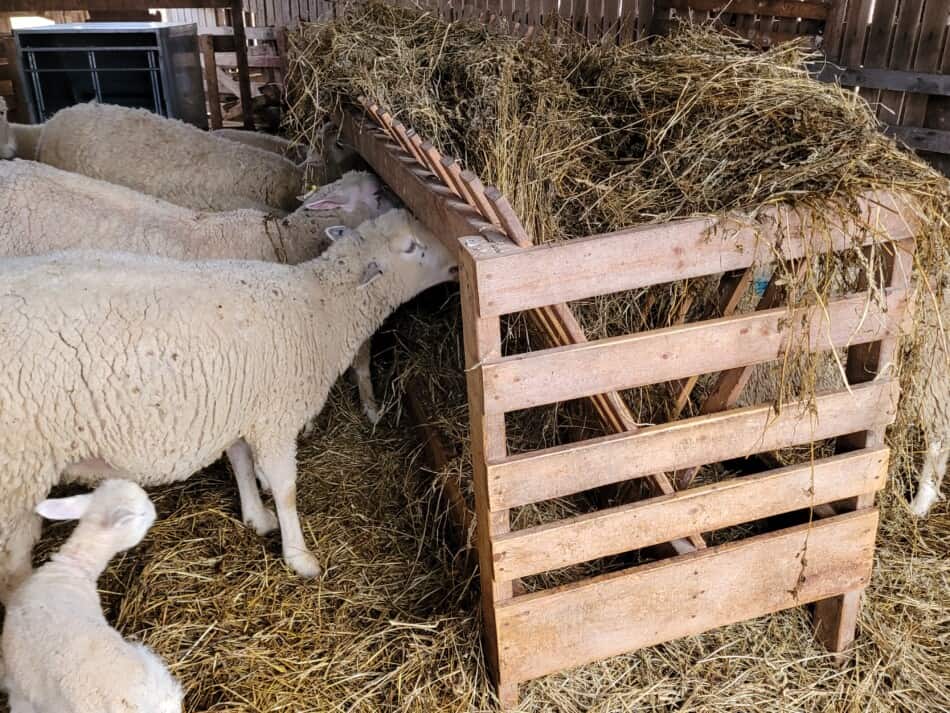
Are your sheep going to be inside a barn?
Are your sheep going to be inside a barn for part or all of their lives? If you have an open, airy barn available and limited land, this is an option for your sheep.
Keep in mind that sheep need plenty of room to move and require good ventilation if you are keeping them inside.
Also, with keeping sheep inside, you will be providing all of the diet yourself, which we’ll get to next.
What will you feed your sheep?
What are you planning on feeding your sheep and how much will that cost? If your sheep will be eating grass, how much of the year will you need to provide hay?
Generally speaking, sheep need about 3.5% of their bodyweight in hay, per day for maintenance.
If they are on grass, they will figure this out, themselves. If they are in the barn, you’ll want to budget for this to make sure the sheep are paying their way.
High need sheep, like late gestation ewes, lactating ewes and growing lambs all need more nutrition than the maintenance amount. This will cost more in higher quality hay and possibly grain.
What Does It Cost To Maintain A Sheep? is my article that goes further into feed costs for your flock.
In my area, we plan on feeding hay for 5 months, so each sheep would need right about 4.5 pound of hay per day in maintenance and early gestation.
4.5 pounds is 130 pound ewe x 3.5% bodyweight = 4.55 pounds of hay
If hay costs me $200 per ton, then I can plan on each ewe needing $0.455 of hay (at $0.10 per pound) per day. So two 130 pound ewes cost me $1.00 to feed per day with this hay.
This means the flock costs $10.50 per day to feed, which is $1,575 in hay for 5 months. Remember this is maintenance, you’ll need to have them on nicer feed or good grass for higher energy need times.
Keep in mind this is just for low need times, any high need sheep will require better feed and more of it.
Supplemental feeding for ewes
Ewes with higher energy needs on low quality forage or maintenance appropriate hay will need more nutrition than they are currently getting when in late gestation and nursing.
In most areas of the country, this part of the ewe’s diet will be the most expensive, if the flock is not on good grass during the high energy need periods.
Read Feeding the Flock by Penn State for a wonderful article on specific feed needs of your flock based on stage in the reproductive cycle.
Supplemental feeding lambs (creep feed)
If you are planning on creep feeding lambs, plan on extra expenses for the grain.
Creep feeding is more common with off season lambs or lambs inside, for pasture lambs with lots of grass, creep feeding is less popular.
Creep feeding is used in my area for folks selling the chunky 55 pound lambs that tend to sell well, but not so much with folks selling lambs off of grass.
Lamb Creep Feeder: What is it and why use one? is an article I wrote to give you the scoop on creep feeders for your flock.
Deworming or other medications for the flock
Deworming or other medications for the flock will vary considerably with where you live and the regulations surrounding raising sheep in your area.
I have put in $50 for a small bottle of dewormer. This bottle should last you a while, but you have to buy the whole thing upfront, so the entire cost of the bottle is listed.
Other medications are not likely unless you are needing to vaccinate or have a ewe with an acute health problem, which can happen but is not overly common.
Plan on paying for help
You’ll probably need to pay for a few other folks to help you out. It may be professionals, like a vet or it may be someone to feed your stock occasionally when you are out of town.
Vet visits: Plan on a few vet visits, you will need them less as you go, but plan on a few each year to start.
Farm help: If you need someone else to do chores for you, plan for this expense.
Custom work: We pay a few professionals to come here and do some work for us, one is a local custom hay guy and the other is a shearer.
When we were getting started, we did these things ourselves. Now it makes more sense for us to pay someone who is well equipped to do it for us.
More reading for you on sheep:
Choosing Breeds for Producing Profitable Market Lambs is a Canadian Ministry of Agriculture article with great info and some comparison tables worth looking at, especially Table 2.
Sheep 201: A Beginner’s Guide to Getting Started Raising Sheep this page is more of an index of getting started articles, click around, this is a wonderfully helpful site.
Feeding the Flock is a Penn State article with great breakdowns of feed needs for different stages of your production year.
